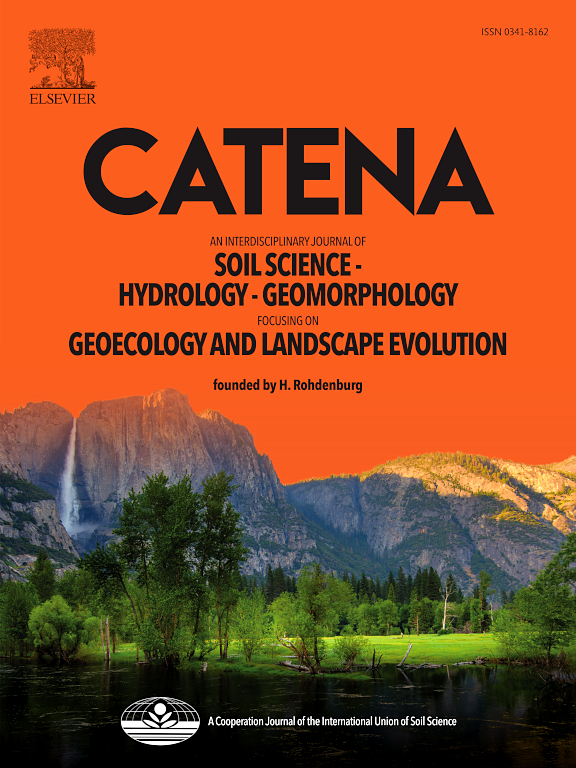Dynamics of microbial communities and organic carbon pools in karst wetland soils
IF 5.4
1区 农林科学
Q1 GEOSCIENCES, MULTIDISCIPLINARY
引用次数: 0
Abstract
Understanding dynamic changes in soil organic carbon (SOC) and microbial communities in karst wetlands is of great importance for the restoration and protection of these environments. The purpose of this study was to characterize the composition and abundance of microbial communities and enzyme activities related to SOC pools in three states of the Huixian karst wetland, representing primary, naturally degraded and human interference conditions (reclaimed cropland). This study employed 16S/ITS2 high-throughput sequencing to characterize the spatiotemporal dynamics of microbial communities. The microbial taxa and enzymes closely associated with variations in SOC pools were analyzed. Significant differences in organic carbon fractions, physicochemical properties, and enzyme activities varied by season and generally showed vertical distribution patterns. The species composition of microbial communities in the three wetland states was broadly similar, but some dominant bacterial species differed significantly in relative abundance. The prokaryotic communities were closely related to changes in organic carbon pools and mainly included Anaeromyxobacter, Bacillus, Bryobacter, Flavisolibacter, Gemmatimonas and Haliangium, of which members of the family Anaeromyxobacteraceae were relatively abundant in reclaimed wetland in summer; Flavisolibacter and Gemmatimonas were relatively abundant in degraded wetland in spring and winter, respectively. Among fungi, Clonostachys, Fusarium, Talaromyces, Conlarium, Westerdykella, Ascobolus, Chaetomium, Polyschema, and Aspergillus were the major taxa closely associated with changes in organic carbon pools. Among them, Fusarium, Talaromyces and Polyschema were relatively abundant in reclaimed wetland in autumn, spring and winter, respectively; Chaetomium and Aspergillus were relatively abundant in degraded wetland in winter and in primary wetland in summer. The enzyme activities closely associated with the variations of organic carbon fractions in karst wetland soils were carbonic anhydrase, sucrase and polyphenol oxidase.

岩溶湿地土壤中微生物群落和有机碳库的动态变化
本文章由计算机程序翻译,如有差异,请以英文原文为准。
求助全文
约1分钟内获得全文
求助全文
来源期刊

Catena
环境科学-地球科学综合
CiteScore
10.50
自引率
9.70%
发文量
816
审稿时长
54 days
期刊介绍:
Catena publishes papers describing original field and laboratory investigations and reviews on geoecology and landscape evolution with emphasis on interdisciplinary aspects of soil science, hydrology and geomorphology. It aims to disseminate new knowledge and foster better understanding of the physical environment, of evolutionary sequences that have resulted in past and current landscapes, and of the natural processes that are likely to determine the fate of our terrestrial environment.
Papers within any one of the above topics are welcome provided they are of sufficiently wide interest and relevance.
 求助内容:
求助内容: 应助结果提醒方式:
应助结果提醒方式:


